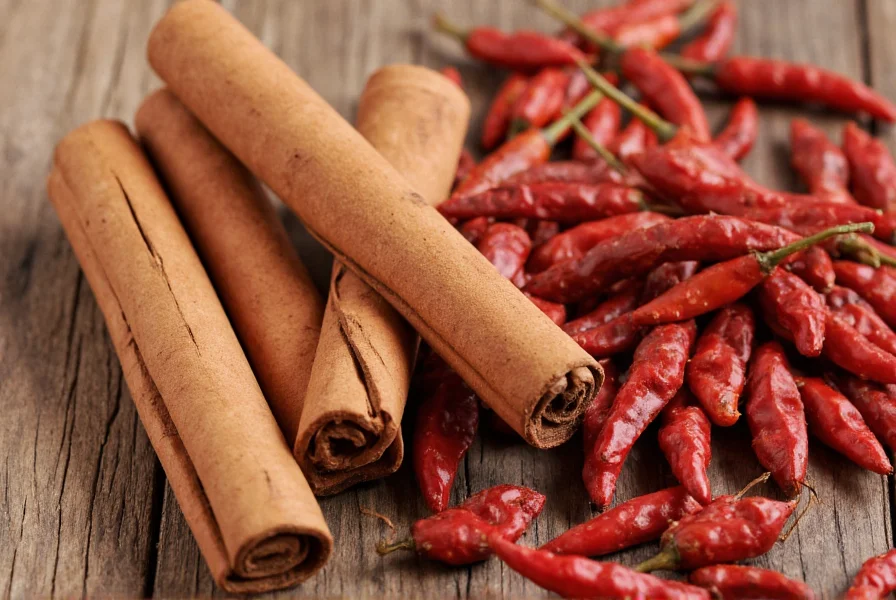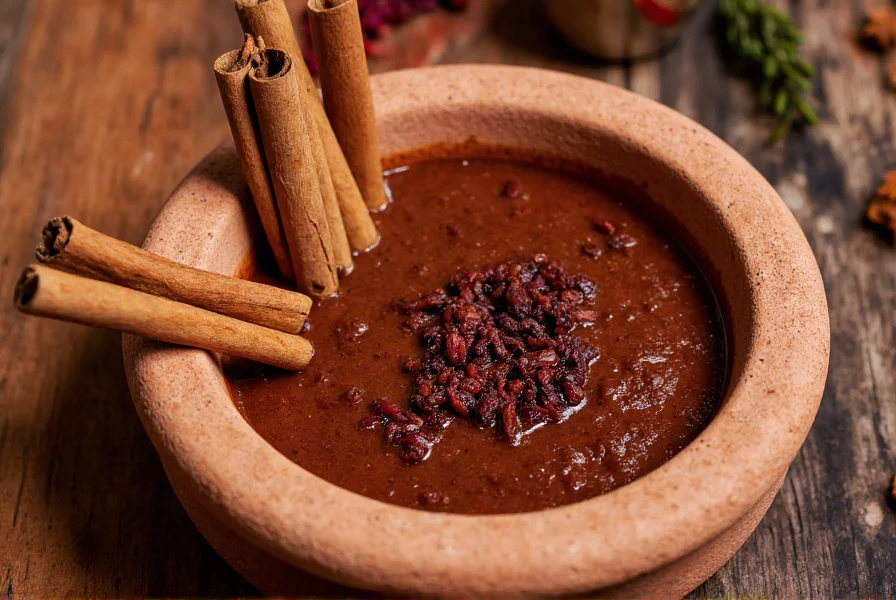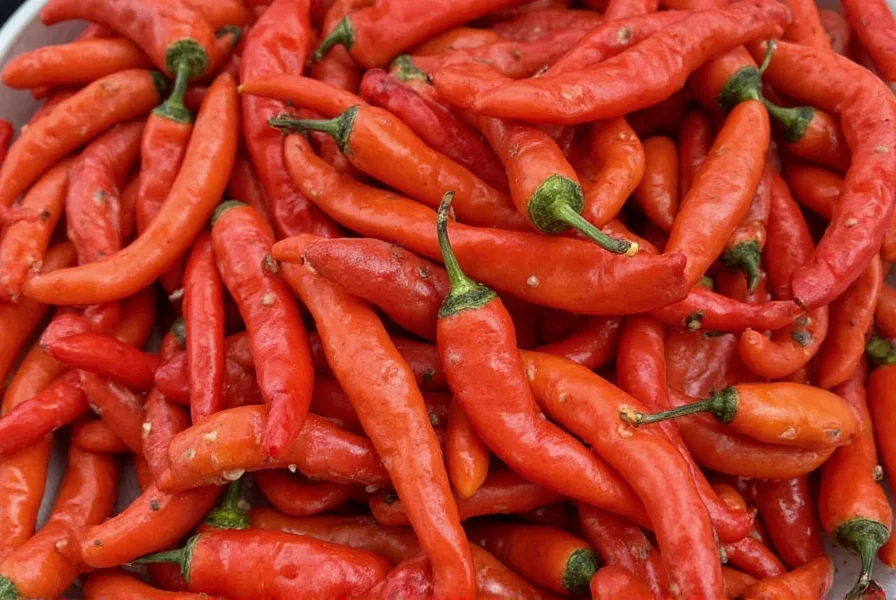Yes, cinnamon and red pepper (particularly cayenne) create a complementary flavor pairing used across multiple global cuisines. The warm, sweet notes of cinnamon balance beautifully with the sharp heat of red pepper, creating complex flavor profiles that enhance both sweet and savory dishes. This combination works because cinnamon's primary compound, cinnamaldehyde, interacts with capsaicin in red pepper to create a harmonious sensory experience rather than competing flavors.
When exploring does cinnamon go good with red pepper, the answer reveals one of culinary science's most intriguing sweet-spicy synergies. This flavor pairing isn't just random kitchen experimentation—it's rooted in centuries of traditional cooking practices across diverse cultures.
Cinnamon brings warm, sweet, woody notes with subtle citrus undertones, while red pepper (typically cayenne or similar varieties) delivers sharp, pungent heat that activates TRPV1 receptors on your tongue. What makes cinnamon and red pepper flavor combination work so effectively is how these contrasting elements create balance rather than conflict.

The science behind this pairing lies in how our taste receptors process these ingredients. Cinnamon's warmth comes from cinnamaldehyde, which affects different receptors than capsaicin (the compound that makes red peppers hot). This means they stimulate separate pathways, allowing both flavors to shine without overwhelming each other.
Global Culinary Traditions Using Cinnamon and Red Pepper
This flavor combination appears in numerous traditional dishes worldwide:
| Cuisine | Traditional Dish | Role of Cinnamon-Pepper Pairing |
|---|---|---|
| Mexican | Mole sauces | Cinnamon provides warmth that balances chili heat while adding complexity |
| Middle Eastern | Tagines and spice blends | Creates depth in savory-sweet combinations, especially with lamb |
| Indian | Garam masala variations | Contributes to the layered spice profile in many curries |
| North African | Harissa variations | Adds warmth that complements rather than competes with heat |
Practical Applications for Home Cooks
Understanding how to use cinnamon with spicy ingredients can transform your cooking. Here are practical ways to incorporate this pairing:
Savory Dishes
When working with cinnamon and chili pepper recipes, start with a 4:1 ratio of cinnamon to red pepper by volume. For example, if using 1 teaspoon of cayenne, begin with 4 teaspoons of cinnamon. This ratio provides balance while allowing both flavors to shine through.
Excellent applications include:
- Adding to rubs for meats (particularly lamb, beef, and chicken)
- Enhancing tomato-based sauces and stews
- Creating complex spice blends for roasted vegetables
- Improving depth in bean and lentil dishes
Sweet Applications
The sweet and spicy flavor pairing guide extends to desserts as well. Cinnamon's warmth complements red pepper's heat in:
- Chocolate-based desserts (red pepper enhances chocolate's natural warmth)
- Fruit compotes and preserves
- Spiced cakes and cookies
- Hot chocolate and other warm beverages

Pro Tips for Perfect Balance
Mastering the best spices to pair with cinnamon requires attention to timing and technique:
- Bloom spices: Toast cinnamon and red pepper in oil before adding other ingredients to maximize flavor release
- Add red pepper later: Since capsaicin intensifies with cooking time, add red pepper toward the end of cooking
- Balance with acid: A splash of citrus or vinegar can help bridge the sweet and spicy elements
- Consider heat level: Adjust red pepper quantity based on the specific variety (cayenne is hotter than paprika)
Common Mistakes to Avoid
When experimenting with does cinnamon pair well with cayenne pepper, watch for these pitfalls:
- Using too much red pepper too soon (heat intensifies during cooking)
- Not accounting for different cinnamon varieties (Ceylon is milder than Cassia)
- Adding both spices at the same time (they have different optimal cooking times)
- Ignoring the dish's other components that might amplify heat
Conclusion: Embracing Flavor Complexity
The cinnamon and red pepper pairing exemplifies how contrasting flavors can create harmony rather than conflict. This combination works because it engages multiple taste receptors simultaneously, creating a more complex and satisfying eating experience. Whether exploring traditional recipes or creating culinary innovations, this sweet-spicy pairing offers endless possibilities for elevating your cooking.
Can I use cinnamon with red pepper in baking?
Yes, cinnamon and red pepper work exceptionally well in baking. The warmth of cinnamon complements the heat of red pepper in chocolate cakes, brownies, and spice cookies. Start with a small amount of red pepper (1/8 to 1/4 teaspoon for every teaspoon of cinnamon) as heat intensifies during baking.
What's the best ratio of cinnamon to red pepper?
For most applications, a 4:1 ratio of cinnamon to red pepper by volume works well as a starting point. This means 4 teaspoons of cinnamon to 1 teaspoon of red pepper. However, this ratio should be adjusted based on the specific dish, the variety of red pepper used, and personal heat tolerance.
Does the type of cinnamon matter when pairing with red pepper?
Yes, the cinnamon variety significantly impacts the pairing. Ceylon cinnamon (true cinnamon) has a more delicate, citrusy flavor that pairs beautifully with milder red peppers. Cassia cinnamon (more common in the US) has a stronger, more intense flavor that works better with hotter peppers like cayenne. Adjust quantities based on which variety you're using.
Which dishes benefit most from cinnamon and red pepper combination?
Mole sauces, chili con carne, certain curry variations, chocolate-based desserts, spiced nuts, and roasted root vegetables benefit most from this pairing. The combination particularly shines in dishes where you want to create depth and complexity rather than straightforward heat.
Why does cinnamon help reduce the perception of heat from red pepper?
Cinnamon doesn't actually reduce the capsaicin content, but its warm, sweet compounds activate different taste receptors than capsaicin. This creates a balancing effect where the brain processes multiple flavor sensations simultaneously, making the heat feel more integrated and less overwhelming. The cinnamaldehyde in cinnamon also has a slight numbing effect that can moderate heat perception.











 浙公网安备
33010002000092号
浙公网安备
33010002000092号 浙B2-20120091-4
浙B2-20120091-4